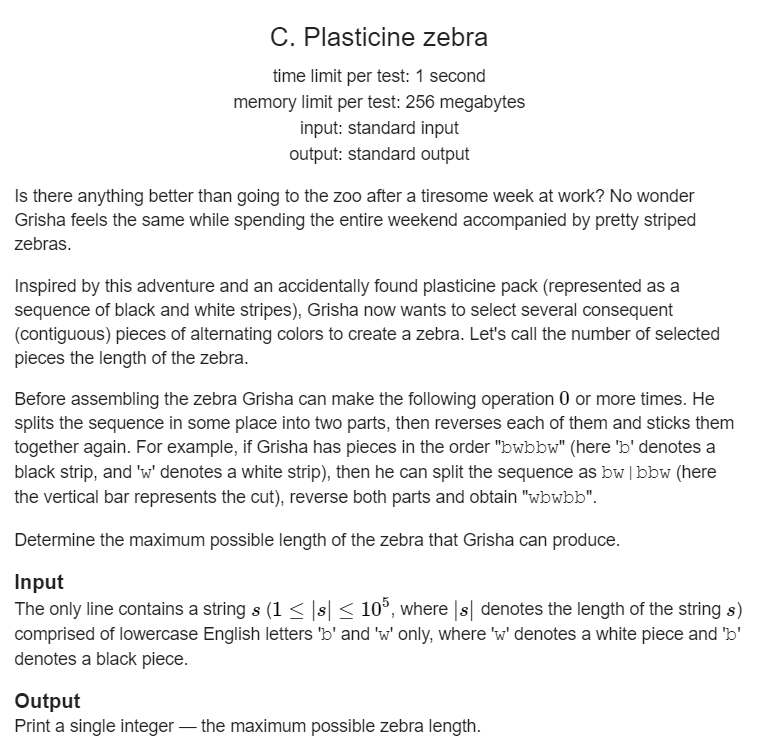
Question meaning: for a string containing only w and b, you can perform clipping and flipping operation bw|bbw - > W b wbwbb. There is no limit to the number of times. What is the maximum number of wb cross subsequences that can be generated?
 It's a question without any thought ~ ~! Reference blog
It's a question without any thought ~ ~! Reference blog
The problem is the bw (head) | (tail) bbw, generating wb| (tail) bbw, moving the latter section to the front is wbbwb, and then this is bwbbw (original string). If we regard this string as a ring connected end-to-end, the relative position of these letters will not change no matter how we operate. That is to say, we can directly count the longest alternating length in this ring.
awsl~
This is my T code in test 14. The reason for T is that I have traversed the starting point. As a matter of fact, it can be finished by sweeping back
#include<iostream>
#include<algorithm>
#include<cstdio>
#include<cstring>
using namespace std;
const int N=2e5+10;
char s[N];
int ans=0;
int main()
{
scanf("%s",s);
int n=strlen(s);
for(int i=n;i<2*n;++i)
s[i]=s[i-n];
for(int i=0;i<n;++i) //Ergodic starting point 0~n-1
{
int tmp=0;
for(int j=i;j<i+n-1;++j) //Guaranteed length not greater than n
{
if(s[j+1]!=s[j])
++tmp;
else break;
}
ans=max(tmp+1,ans); //tmp records the number that is larger at the back than at the front, plus the starting point
if(ans==n) break;
}
printf("%d\n",ans);
//cout<<strlen(s)<<endl;
//cout<<s<<endl;
}A code
int main()
{
scanf("%s",s);
int len=strlen(s);
for(int i=len;i<2*len;++i)
s[i]=s[i-len];
//cout<<s<<endl;
len<<=1;
int tmp=1;
for(int i=1;i<len;++i)
{
if(s[i]!=s[i-1])
{
if(i==len-1) ans=max(ans,tmp); //Bw bwbw this situation
tmp++;
}
else
{
ans=max(ans,tmp);
tmp=1;
}
}
len>>=1;
ans=min(ans,len);
cout<<ans<<endl;
}